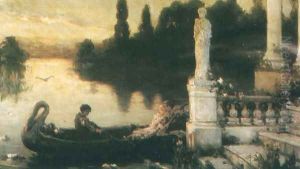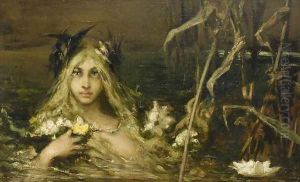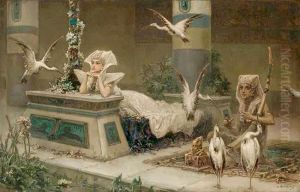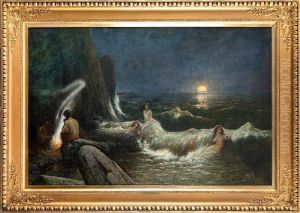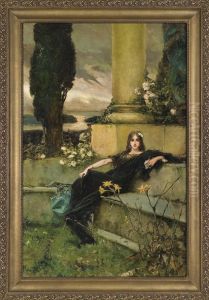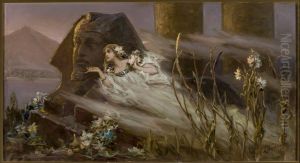Wilhelm Kotarbinski Paintings
Wilhelm Kotarbiński, often also referred to as Władysław Kotarbiński, was a Polish painter, born on November 30, 1849, in Nowy Sącz, a town in the Austrian sector of partitioned Poland. Renowned for his contributions to academic and symbolist art, Kotarbiński's work was steeped in the rich cultural history of Poland and the broader narratives of Slavic mythology and Orientalism. His artistic journey took him through a diverse array of subjects, including historical scenes, portraits, and genre works, often imbued with a sense of romanticism and a penchant for the exotic.
Kotarbiński pursued his initial artistic education at the School of Fine Arts in Kraków, where he studied from 1867 to 1871. He later continued his studies at the Academy of Fine Arts in Vienna and subsequently at the Academy of Fine Arts in Munich, which was a popular destination for Polish artists at the time. In Munich, Kotarbiński honed his skills and embraced the academic style, becoming influenced by the works of Arnold Böcklin and other symbolist painters.
Throughout his career, Kotarbiński was an avid traveler, which greatly influenced the themes and styles of his artwork. His travels took him to Italy, Greece, and Egypt, and the impressions from these trips are evident in his paintings, which often featured scenes from the life of ancient civilizations, oriental landscapes, and mythological subjects. The allure of the East, its culture, customs, and architecture, left a lasting impression on his work, leading to some of his most notable paintings that depicted Eastern subjects with a touch of exotic romanticism.
Kotarbiński's work was well-received in his time, and he participated in numerous exhibitions, garnering attention and accolades. He also became a member of various artistic societies, which helped to solidify his reputation within the art world. His paintings were characterized by meticulous attention to detail, a vibrant color palette, and a masterful handling of light and shadow, all of which contributed to the dreamy, otherworldly quality of his work.
Wilhelm Kotarbiński passed away on November 4, 1921, in Warsaw, Poland. Despite the passage of time, his legacy lives on, and his contributions to Polish art are still celebrated. His works can be found in various museums and private collections, and they continue to be studied and admired for their beauty and historical value.
